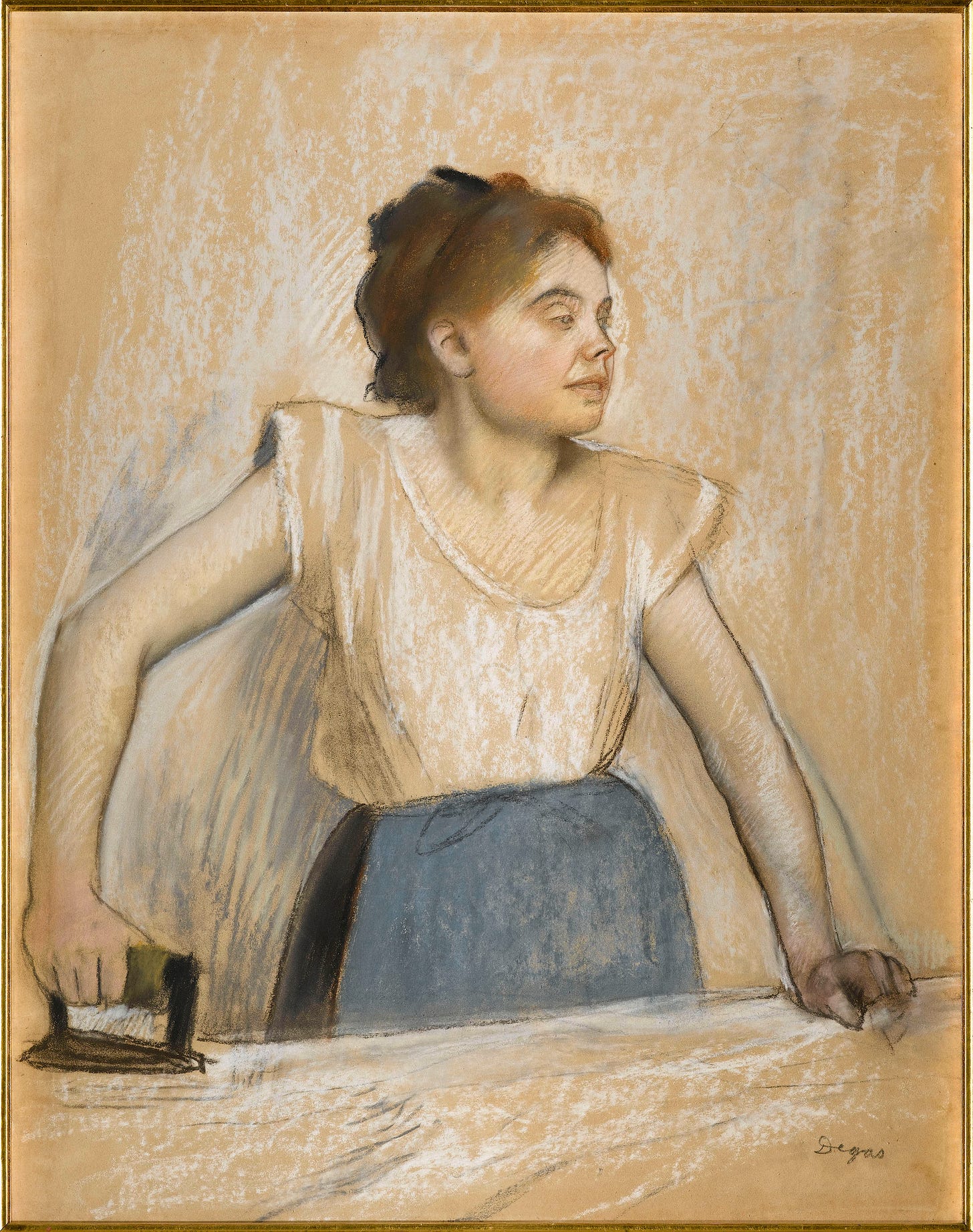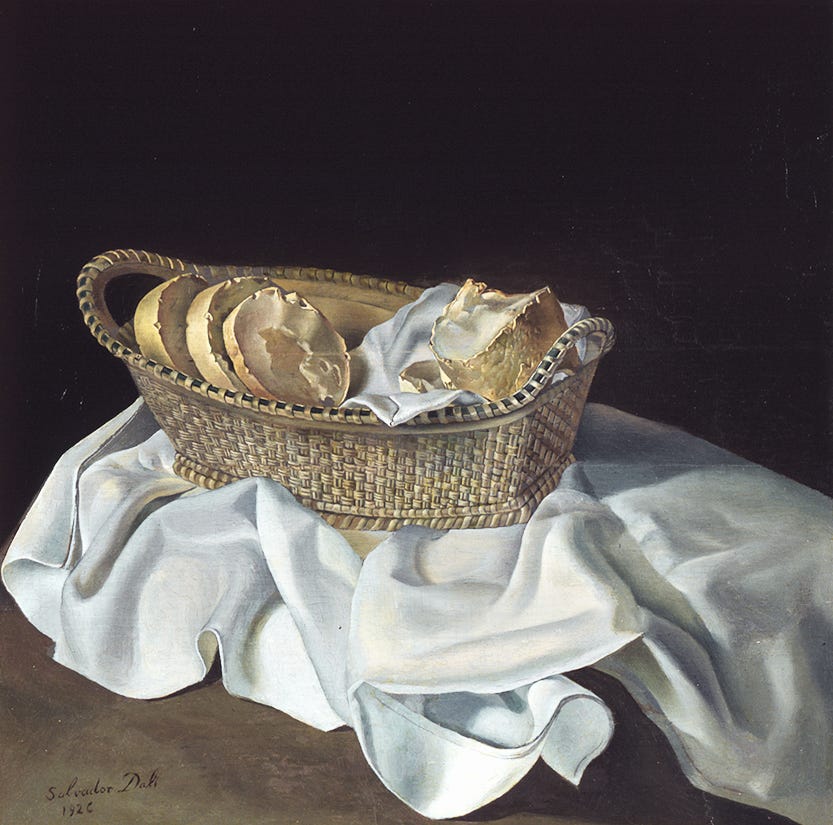New Hoover Deluxe Shampoo Polisher (Jeff Koons, 1980)
Yes, what you think you see is exactly what it is—Jeff Koons put a vacuum cleaner in a clear plastic box, in front of some fluorescent lights. Um . . . what? Is this art? Why am I supposed to care if Jeff Koons calls his vacuum cleaner a piece of art? It was sold at a Sotheby’s evening sale on May 15, 2007. The catalog that accompanied the sale claimed the piece was “addressing social class and gender roles as well as consumerism.”1 Well, is it?
Who knows what people think about when they are vacuuming? I know I think things like “ooh, there’s a crumb, gotta get that crumb, there’s another speck, there’s a bit of something there, gotta get that crumb there.” Maybe Jeff Koons was vacuuming one day and thought something about how housework is a task commonly left to women or proles, and said to himself “Hey, that’s interesting, I should make art about that,” so he made this piece of art. Is it the exclusive privilege of artists to let their minds wander when they are doing the housework? It reminds me of how little kids will say things like “this would be hard if people had horns” while they’re trying to put on a hat. Children and artists both seem to be able to get away with thinking about the world in a manner that mature (boring) adults don’t.
This artwork is annoying and obnoxious because it’s just a vacuum. Where is the artistry? How would an artist working in a more traditional idiom talk about social class and gender roles, i.e. chores? Here are some pictures, one by Picasso and one by Degas, about doing the ironing.
And here is one by Vermeer, not about ironing this time; it’s about chores in general.
Look at the first two pictures. What is the artist trying to convey about chores? In the Picasso, the malnourished woman, bent over her toil, looks like she was recently crying; the mood is one of anguish, oppression, and melancholy. Apparently Picasso does not think ironing is any fun at all. But Degas’ laundress seems cheerful; I can almost hear her humming to herself, or perhaps talking to someone else in the room. In both cases, the artist is certainly trying to steer the conversation one way or another with the way the subject matter is presented. But what if an artist didn’t want to do that? Can an artist make an artwork about something in a completely neutral fashion, without editorializing? The painting by Vermeer comes close, although maybe it leans toward the “dignity of labor” side of the discussion. I really don’t know what Vermeer was thinking about when he painted his milkmaid, but suppose he had some statement about chores that he was trying to make. In that case there is a problem with Vermeer’s work, because it is too beautiful—the viewer is swept into the remarkable technical skill evident in the painting, the balanced composition, the superb use of light and shade, the brilliant handling of color and the verisimilitude with which the different textures of the objects are portrayed—and any “message” just gets lost in the gorgeous noise. Art lovers have been saying, for centuries, “What amazing skill! What talent!” and if Vermeer is saying “I was hoping we could talk about social class and gender roles!” he is being ignored.
When an artist in the traditional sense, one who has spent enormous amounts of time and effort perfecting their craft, wants to Say Something, the very fact that they have artistic skill gets in the way of their message. Maybe Koons has found a way around this problem, by presenting his statement devoid of skill or artistry. But is any message coming across in New Hoover Deluxe Shampoo Polisher?
Imagine Degas, Picasso, Vermeer, and Koons hanging out together. Vermeer says “I was thinking about housework the other day.” Degas says “Yes—the nobility of menial labor, the value of simple chores.” Picasso says “I don’t know about that; chores can be backbreaking drudgery for some people.” Then Koons says “Vacuums!” and the other three look at him, wondering why he even bothered to speak. That is the problem with Jeff Koons’ New Hoover Deluxe Shampoo Polisher—that is what makes it bad art; it doesn’t communicate anything. It is form in search of content. Whatever thoughts about class and gender that you have while looking at it, you brought to it yourself.
Maybe it’s really a catalyst for thoughts about artistic skill, the appropriateness of various media, or what it means for an artist to speak about something. If so, we still have to bring too much of ourselves to the artwork before it starts to speak. Compare New Deluxe . . . etc. with this painting by he of the moustache, Salvador Dalí:
If Koons is yelling “Vacuums!” then Dalí is yelling “Bread!” But Dalí is also saying “look at my skill in depicting bread!” so at least we have that to talk about. On the surface, it’s about bread, but Dalí ’s painting is really about technical mastery. What subsurface message does Koons’ vacuum convey? Um, that Koons has good taste in vacuums?
Now, wasn’t that interesting? Would you have thought about any of this were it not for Jeff Koons’ New Hoover Deluxe Shampoo Polisher? Maybe it has some value after all.
The catalog is quoted on page 24 of Don Thompson’s The $12 Million Stuffed Shark, a brilliant and highly disturbing book which I’m planning on writing about soon, so watch this space.






